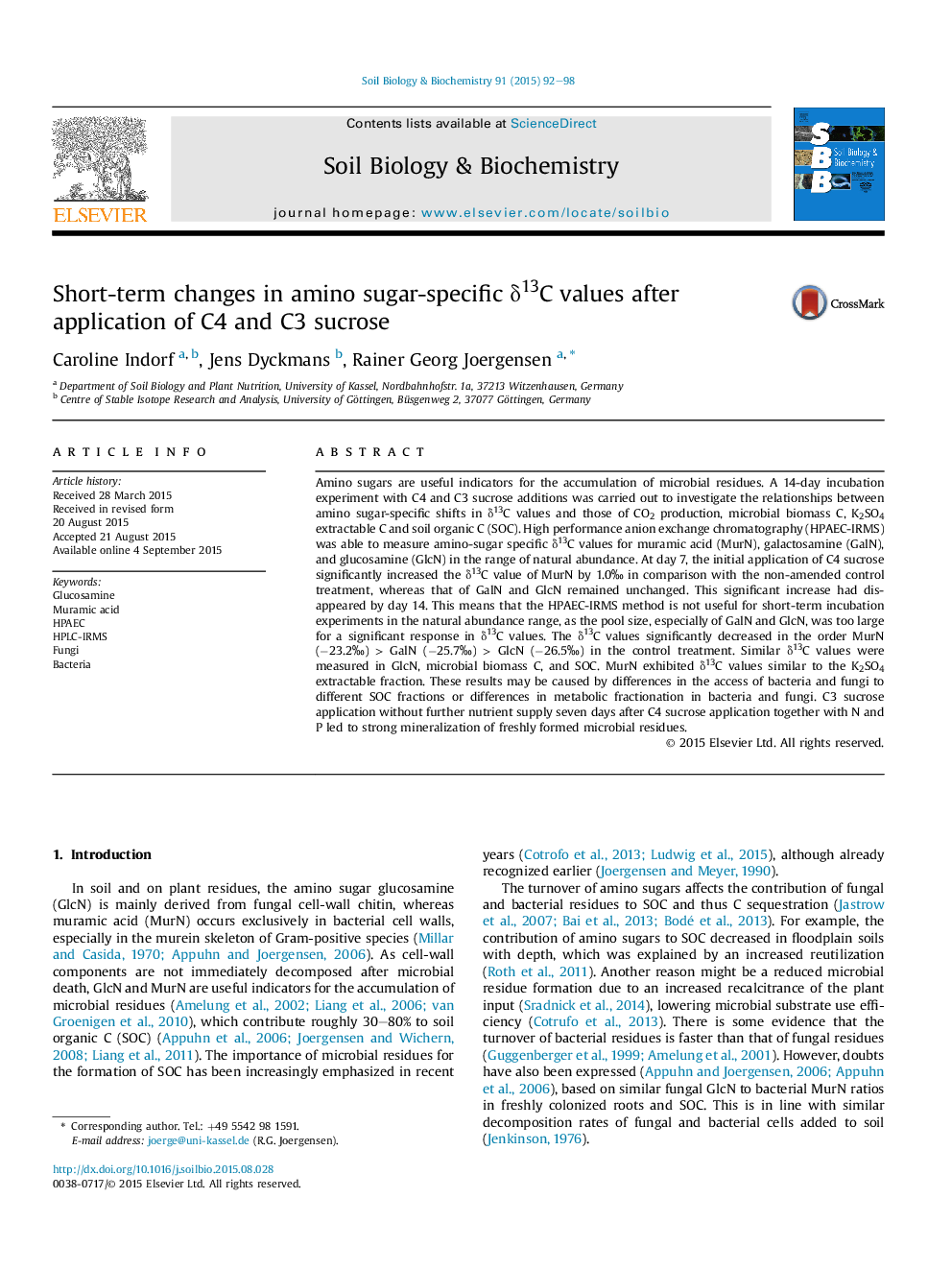| Article ID | Journal | Published Year | Pages | File Type |
|---|---|---|---|---|
| 8363765 | Soil Biology and Biochemistry | 2015 | 7 Pages |
Abstract
Amino sugars are useful indicators for the accumulation of microbial residues. A 14-day incubation experiment with C4 and C3 sucrose additions was carried out to investigate the relationships between amino sugar-specific shifts in δ13C values and those of CO2 production, microbial biomass C, K2SO4 extractable C and soil organic C (SOC). High performance anion exchange chromatography (HPAEC-IRMS) was able to measure amino-sugar specific δ13C values for muramic acid (MurN), galactosamine (GalN), and glucosamine (GlcN) in the range of natural abundance. At day 7, the initial application of C4 sucrose significantly increased the δ13C value of MurN by 1.0â° in comparison with the non-amended control treatment, whereas that of GalN and GlcN remained unchanged. This significant increase had disappeared by day 14. This means that the HPAEC-IRMS method is not useful for short-term incubation experiments in the natural abundance range, as the pool size, especially of GalN and GlcN, was too large for a significant response in δ13C values. The δ13C values significantly decreased in the order MurN (â23.2â°) > GalN (â25.7â°) > GlcN (â26.5â°) in the control treatment. Similar δ13C values were measured in GlcN, microbial biomass C, and SOC. MurN exhibited δ13C values similar to the K2SO4 extractable fraction. These results may be caused by differences in the access of bacteria and fungi to different SOC fractions or differences in metabolic fractionation in bacteria and fungi. C3 sucrose application without further nutrient supply seven days after C4 sucrose application together with N and P led to strong mineralization of freshly formed microbial residues.
Related Topics
Life Sciences
Agricultural and Biological Sciences
Soil Science
Authors
Caroline Indorf, Jens Dyckmans, Rainer Georg Joergensen,
